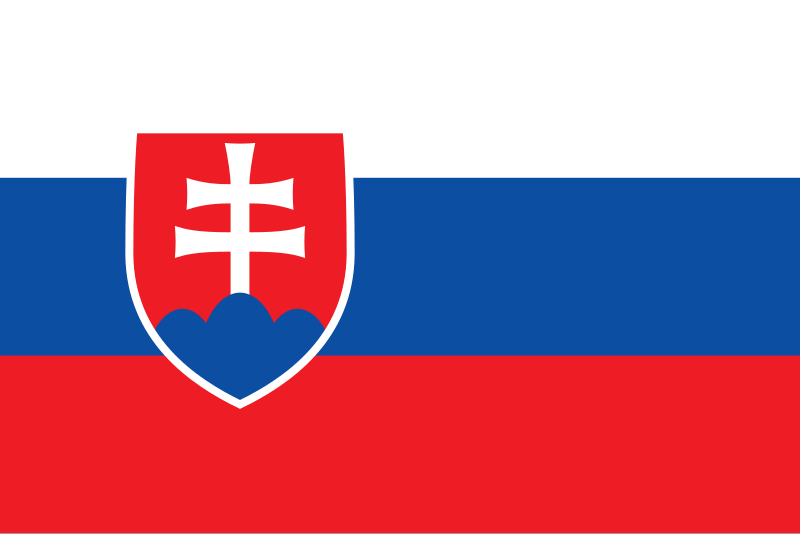Business payments in Austria are overdue for a shakeup. Especially when it comes to how small and medium enterprises (SMEs) handle cross-border B2B transactions. Legacy banking systems are slow, expensive, and anything but transparent. Between high FX spreads, multi-day settlement times, and compliance headaches, small businesses often carry the biggest burden.
But now, Austrian SMEs and stablecoins are becoming more closely linked. B2B payments with stablecoins like USDC and USDT are being adopted more and more. Stablecoins are digital currencies pegged to a stable asset, typically the US dollar. What this means in practice is near-instant global payments, minimal fees, and zero volatility. Unlike Bitcoin or Ethereum, which fluctuate daily, USDC vs traditional payments for Austrian companies is a no-brainer when you look at stability and ease of accounting.
Stablecoin adoption in Europe is moving fast, and Austria isn’t lagging behind. Whether it's blockchain-based payments for SMEs in Austria or simply using stablecoins to streamline B2B finance in Austria, individuals and businesses are increasingly embracing digital payments. This blog talks about how crypto payments in Austria are evolving, how SMEs are using stablecoins, and why business payments in USDC are becoming the smarter, faster way to move money.
Stablecoin Payments Austria
More small businesses including exporters, service providers, and software companies are quietly shifting away from slow, traditional payment rails. Stablecoin payments in Austria solve the pain points of legacy finance and are especially sharp for SMEs. Austrian SMEs and stablecoins are becoming a natural fit. Because USDC and USDT for B2B transactions saves you from every delayed transfer or unexpected FX fee that cuts into margins. Stablecoin payments in Austria ensure faster settlement times, lower transaction fees unlike 7-10% bank spread or SWIFT cost, clear FX without any hidden conversion traps and global reach.
Additionally, Austria has been relatively proactive when it comes to blockchain and crypto regulation, aligning with broader stablecoin adoption in Europe. This gives businesses confidence to use blockchain payments for businesses without worrying about compliance landmines. For Austrian SMEs trying to juggle payments across borders, TransFi simplifies the entire process and gives you a regulatory edge. It routes every transaction through the most cost-effective path using AI-powered smart routing, all while ensuring global compliance.
USDC vs Traditional Payments for Austrian Companies
Traditional business payments are outdated, especially for cross-border transactions. Austrian companies still relying on banks or SWIFT for international B2B payments are paying too much, waiting too long, and dealing with more friction than necessary.
Business payments in USDC solve this. USDC is a fully-reserved stablecoin pegged 1:1 to the U.S. dollar. It’s regulated, transparent, and behaves like cash moving at internet speed. For Austrian SMEs that need to pay international partners, contractors, or suppliers, USDC vs traditional payments for Austrian companies is no contest.
Traditional Bank Transfers:
- Settlement Time: 1–5 business days
- Fees: High SWIFT fees, FX spreads, intermediary charges
- Transparency: Poor (no visibility on when funds arrive)
- Availability: Limited to banking hours, delayed on weekends/holidays
- Reconciliation: Manual, slow, prone to errors
Business Payments in USDC (especially via TransFi):
- Settlement Time: Seconds to minutes
- Fees: Near-zero, no intermediary charges
- Transparency: Full visibility, end-to-end tracking
- Availability: 24/7/365, no off days
- Reconciliation: Instant, automated via blockchain
For Austrian SMEs using stablecoins, USDC is basically a financial upgrade. The stability of USDC, combined with its global liquidity, makes it perfect for B2B payments with stablecoins across borders. And when you plug into TransFi, those advantages multiply. TransFi connects your business to 80+ digital assets, 250+ payment methods, and over 100 currencies.
B2B Payments with Stablecoins
B2B payments haven’t evolved fast enough to meet the needs of globally connected businesses. Traditional banking systems still act like it’s 1998. But now that stablecoins like USDC and USDT are entering the landscape and B2B payments with stablecoins are shifting the whole dynamic. For Austrian SMEs, it’s not just about crypto for crypto’s sake. It’s about solving real business problems and ensuring faster payments, clearer processes, and fewer costs.
What does a B2B stablecoin payment actually fix?
- Late payments and cash flow gaps
Stablecoins settle instantly. That means you don’t have to wait 2–4 days to access funds or confirm receipt. - High foreign exchange costs
When you’re making multi-currency payments, banks often take 2–4% through spreads and fees. Blockchain payments for businesses via USDC eliminate the middlemen. - Cross-border reconciliation nightmares
Each stablecoin transaction is traceable on-chain. No more back-and-forth emails asking if money was received. - Inconsistent availability
Stablecoins don’t care if it’s a weekend or holiday. Payments are processed 24/7/365.
As stablecoin adoption in Europe grows, the businesses that get in early are seeing operational advantages, happier suppliers, faster deals, and fewer late fees. TransFi ensures efficient business payments in Austria via stablecoin rails. It provides enterprise grade security and global compliance so as to ensure that your B2B payments with stablecoins are always effortless.
Also read about: Canada's Payment Rails & How They Work - The Complete Guide
SMEs Using Stablecoins
Stablecoins aren’t just for crypto-native startups anymore. They’re now part of the financial toolkit for smart small and medium-sized enterprises across Austria. Whether it’s a 12-person logistics firm in Salzburg or a digital design agency in Vienna, more and more Austrian SMEs are using stablecoins to get paid faster, settle supplier invoices, and dodge high banking fees.
Why are SMEs using stablecoins?
Stablecoin payments in Austria are gaining traction because they’re unlocking a level of financial agility that traditional banking never offered to smaller businesses. Here is where SMEs are using stablecoins:
- Cross-border supplier payments: Instead of going through a bank and waiting days while losing money on FX, SMEs are using USDC and USDT for B2B transactions to pay suppliers in Eastern Europe, Asia, and Africa.
- Receiving international revenue: A freelancer or small business working with U.S. clients chooses business payments in USDC, then uses a platform like TransFi to convert into euros at a better FX rate than any Austrian bank would offer.
- Handling payroll for remote contractors: Some SMEs are hiring abroad and using B2B payments with stablecoins to send weekly or monthly compensation, with full on-chain tracking and real-time delivery.
- Holding short-term operating capital: SMEs are even starting to keep part of their treasury in USDC to manage cross-border liquidity more efficiently without the volatility of traditional crypto.
Austrian businesses using TransFi gain access to the stablecoin world without needing deep crypto knowledge. TransFi auto routes payments via the most cost-effective rails, handles conversions, stays compliant with evolving European regulation and unlocks seamless blockchain-based payments for SMEs in Austria. All while keeping transaction fees low and settlement times near-zero. As stablecoin adoption in Europe continues to rise, Austrian SMEs that get onboard now are putting themselves ahead of the curve.
Crypto Payments Austria
Austria is no stranger to crypto. From Vienna’s blockchain meetups to the rise of crypto-friendly fintechs, the country has quietly built one of the most forward-thinking regulatory environments in Europe. Today, crypto payments in Austria are no longer limited to individuals speculating on Bitcoin or buying coffee with ETH. Rather, businesses, especially SMEs, are now using crypto rails to make real payments, with stablecoins leading the charge. For many Austrian entrepreneurs, stablecoin payments in Austria are a gateway to crypto without the volatility. Additionally, Austria operates under MiCA-aligned EU regulations, giving businesses a compliant path to use stablecoins without worrying about legal gray zones.
Crypto payments in Austria also bring with them a global business mindset. Many Austrian SMEs operate internationally and crypto payments offer a flexible way to work with partners in the U.S., Asia, or Africa without slow SWIFT transfers and high FX costs. TransFi enables smarter blockchain payments for businesses. It gives businesses the power to send or receive business payments in USDC, move funds across 100+ countries, leverage 250+ local payment methods, tap into 80+ digital assets and get paid or pay out in 40+ currencies.
Business Payments in USDC
More and more companies, especially small and mid-sized ones, are turning to business payments in USDC because unlike dollars sitting in a bank, USDC moves instantly, globally, and without middlemen draining money from your margins. USDC is a stablecoin backed 1:1 by USD. Unlike Bitcoin or Ethereum, its value doesn’t fluctuate. It’s dollar-for-dollar, always.
Business payments in USDC ensure instant settlement and low cost by eliminating SWIFT fees, FX markup as well as intermediaries involved. They also provide 24/7 availability and full transparency as blockchain records every transaction and is always on.
This is especially valuable for SMEs using stablecoins that can’t afford to sit on receivables for days or absorb 3–5% in banking costs. And when efficient business payments in Austria are the goal, USDC delivers in a way euros, dollars, and traditional transfers simply don’t.
Conclusion
For Austrian SMEs, stablecoins are becoming a serious financial strategy. The combination of speed, transparency, and low cost makes stablecoin payments in Austria one of the smartest moves a business can make right now. With B2B payments using stablecoins, Austrian companies can finally compete globally without being slowed down by old financial infrastructure. TransFi is everything Austrian businesses need to make blockchain-based payments for SMEs in Austria efficient, compliant, and easy to manage. It’s a full-stack cross-border payments engine built for real business needs and offers 250+ local payment methods, 40+ fiat currencies, 80+ digital assets, enterprise-grade security, instant FX at market-leading rates, AI-powered smart routing as well as global compliance, all in one place.
FAQs
1. How are Austrian SMEs using stablecoins for B2B efficiency?
Austrian SMEs are using stablecoins like USDC and USDT to send and receive cross-border payments faster and cheaper than traditional methods. They're paying international suppliers, accepting payments from clients abroad, and even managing payroll for remote teams, all through blockchain-based rails.
2. What are the benefits of stablecoin payments for small businesses in Austria?
The benefits of stablecoin payments for small businesses in Austria include faster settlements, lower fees, no banking-hour restrictions, better FX rates, as well as transparent and trackable transactions. These benefits are especially helpful for SMEs with international exposure, giving them the ability to manage cash flow more effectively.
3. What is the best way of enabling blockchain-based payments for SMEs in Austria?
The best way of enabling blockchain-based payments for SMEs in Austria is using a platform like TransFi. TransFi connects stablecoin rails to over 250 payment methods, handles 40+ currencies, and offers AI-optimized routing to ensure every transaction is fast, compliant, and low-cost.
4. Why are businesses using stablecoins to streamline B2B finance in Austria?
Businesses are using stablecoins to streamline B2B finance in Austria because traditional B2B payments are too slow, too expensive, and too unreliable. Using stablecoins to streamline B2B finance in Austria helps companies get paid faster, reduce transaction costs, and eliminate cross-border banking delays.
5. What is the best cross-border stablecoin payment solution in Austria?
TransFi is the best cross-border stablecoin payment solution in Austria. It supports USDC and other digital assets, connects to 100+ countries, provides instant settlement, and ensures every payment is routed through the fastest, cheapest, and most compliant path available by using real-time AI decision-making.
Table of Contents
Suggested Article
Explore our products

Make global payments at the speed of a click

Accept payments, remove borders.

Unlock Seamless Digital Currency Transactions Anywhere








.png)














